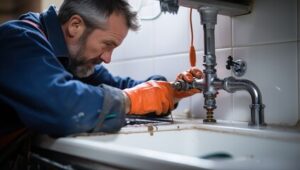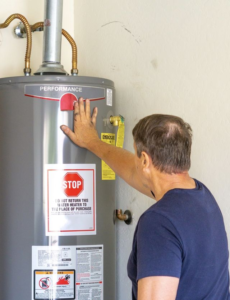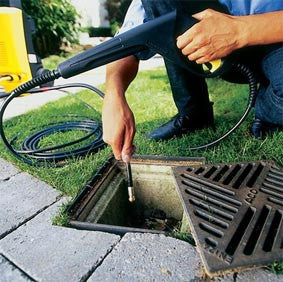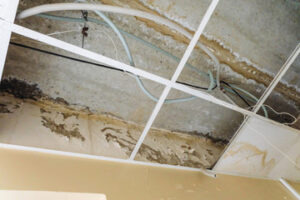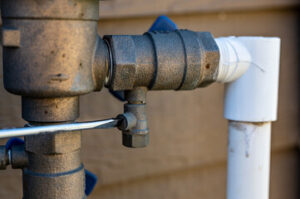Tree Removal Irvine is an involved task that requires specialized knowledge and equipment. It can be done safely and effectively when performed by professionals.
The exact process depends on the type of tree being removed and its condition. However, in general, it follows a similar process. The price of the job varies depending on size and location.
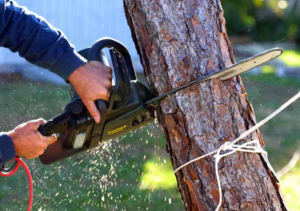
Trees are an important part of any home or commercial property. They add curb appeal, provide shade as you work or relax outside, and often increase the value of your land. But trees are not invincible, and they can become damaged by pests or disease or simply lose their structural integrity. The best way to protect your property is by working with a reliable tree removal service that understands the importance of identifying and responding to problems quickly.
A common early warning sign is a tree with dead branches or limbs that are falling more than usual. You should also take note of a sudden decline in leaf growth or if your tree’s leaves seem to be developing later and then dropping earlier than usual. In addition, if your tree has large holes or vertical cracks in its trunk, it may be time for a professional inspection.
An experienced tree care company can determine the health of a tree by looking at things like a tree’s root system, which helps it get nutrients and water from the soil. If a tree’s roots are damaged by things like mulch, lawn mowers or recent nearby construction it could indicate that the tree is under stress and needs to be removed.
The fungi that grow in and around a tree can be another indication of damage. Fungi are opportunistic and tend to thrive in trees that are already weakened or stressed by something else. They can cause internal decay in the tree, which can pose a safety hazard during storms and high winds.
The location of a tree also matters, especially if it’s growing too close to structures like buildings or power lines or in a rocky area with little soil. A poorly placed tree is more likely to fall and damage your property, which can be dangerous to people or pets. It’s a good idea to have your trees inspected regularly by an International Society of Arboriculture certified arborist so that you can address potential problems before they become major issues.
While it’s best to preserve trees where possible, sometimes the situation is such that a tree should be removed. A few reasons for this might include:
The tree is dead or dying. This might be obvious when the top branches fall off or the trunk has rotted in places.
It is growing too close to a house, barn or utility lines. This can be dangerous if the tree falls or damages these structures.
A new construction project is being built nearby, and the trees will be in the way of excavation or landscaping. This is a common reason for homeowners to get rid of one or more trees.
Some locations have regulations on when it is okay to remove a tree. For example, it may be against the law to remove a tree because it is old or damaged. Others require a permit to remove a tree that is too close to a home or power line.
Once the decision has been made to remove a tree, it is time to start planning the job. A professional arborist is best suited to carry out this work since they have the knowledge, training and expertise needed to do it safely.
If the tree is too large to be felled in one piece, a specialist will have to remove it in sections. This will require a rigging cable to be set from the middle of the tree and used to cut down limbs and lower the trunk sections. Then, a worker on the ground will guide the rope and ensure the sections fall in the desired direction.
It is also important to consider what will happen to the stump once the tree is removed. Some choose to have the stump ground down until it is no longer visible. This is an additional service that can usually be added on to the cost of removing the tree itself. It is a good idea to talk about this with your tree removal company in advance so that everyone is clear on what will happen with the stump.
Trees can sometimes need to be removed for a variety of reasons. They may be dead, or they could have been damaged in a storm and are now a safety hazard. You should also remove a tree because it is too close to a building or power lines. It is important to carefully consider the reasons for removing a tree before you take action. If you are unsure whether the tree should be removed, it is worth asking an expert for advice.
Once you have decided to have a tree removed, it is important to prepare the area where the work will take place. This will help to ensure the safety of everyone involved and prevent damage to property. It is essential to mark out a safe working zone and clear the area of any vehicles, lawn furniture, potted plants, and other items that could be damaged during the process. This should be done before the crew arrives and it is a good idea to inform your neighbors that the work will be taking place, so they can adjust their plans or move their belongings if necessary.
When preparing the area, you should also make sure that it is easy for the crew to access their equipment and trucks. This will likely involve clearing a pathway so they can get back and forth from their vehicle and the work site. It is also a good idea to clear the area of any obstacles that could get in their way, such as toys, trampolines, and garden benches. It is also a good idea to contact the power company ahead of time and have them disconnect any nearby power lines that might be in the vicinity of the work area.
Finally, you should make sure that the work site is free from any hazards that might be present, such as broken glass and other debris. It is a good idea to clear the area of these hazards before the crew arrives and make sure that it is clearly marked as a working zone.
It is always a good idea to call an ISA certified arborist(r) to assess any tree that seems unhealthy. If a tree has a significant lean or if the roots are upheaving, it is a good idea to have that tree removed as soon as possible. This is particularly important if that tree is near a house or other structure. In addition, if the tree is diseased or infested with pests like emerald ash borer, oak wilt, or gillywinkle, these should be removed immediately as they will likely spread to other nearby trees.
While it is possible to remove a tree on your own, it is not recommended. Not only is it time-consuming, but it can be very dangerous without the proper training and equipment. It is also important to remember that every city has different regulations regarding the removal of trees, and you must consult the local laws before proceeding with any work.
A professional can provide a range of services, from pruning to felling. They can also help with stump grinding and wood chipping. It is important to choose a company that has experience with the type of tree you are dealing with and is licensed and insured. They can provide you with a quote and discuss your options.
One way to save money on tree removal is to repurpose the wood instead of discarding it. It can be used for firewood, crafting projects, or as mulch for the garden. This will not only save you money on disposal fees, but it will also help to preserve the environment and keep wood out of landfills.
Starting up a business in the tree service industry is an exciting endeavor, but it can be challenging to get started. It is crucial to set realistic goals and to focus on your strengths. It is also important to have the right tools and equipment for the job, as well as to plan ahead. It is a good idea to start small and to grow your business slowly as you go. This will allow you to test the waters and to see if your business is viable before making any major investments.


